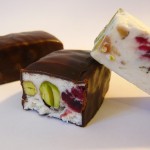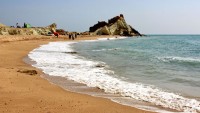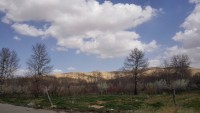The Top 10 Things to Do in Isfahan
Isfahan is one of the best and most beautiful and tidiest cities of Iran. It is called “half-of-the-world” by many people due to its uniqueness and grandeur. It is hardly visually appealing rivaled by other cities of Iran. It is a live museum of artisans and handicraftsmen with its historic bazaar, attractive bridges, and adorned mosques are the most wonderful highlights you can enjoy. These are the most valuable attractions in tourists’ eyes.
- Isfahan attractions
- Isfahan attractions
- Isfahan attractions
Naqsh-e Jahan Square: Known as Imam Square, this place his attraction is placed at the center of Isfahan, Iran. It is an important historical place and one of UNESCO’s World Heritage Sites. This 160 meters-wide and 560 meters-long square is surrounded by buildings from the Safavid era. You can see the Imam Mosque on the south side of the street. There are some horses with their carriages in which you can do horseback riding and they will take you back in time to the Safavid era as if you are the king on the horse.This place that includes Imam Mosque, Sheikh lotfolah Mosque, Alighapoo and Bazaar.
1_Imam Mosque, with blue-tiled mosaic designs and stunningly attractive and perfectly proportioned architecture of Safavid era creates a perfectly marvelous view to your eyes. This superb monument represents the creativity of Shah Abbas and the expertise of his architect.Construction of this masterpiece started in 1611 and terminated in 1629, the last year of Shah Abbas’s reign, when its high dome was finished. The white marble stones for its foundation were brought from the city of Ardestan and its portal is festooned with Kashi Moarraq by very skillful artists of that era. Its portal was constructed to face the square, but the mosque’s orientation is toward Mecca and the square is connected to the inner courtyard through a short corridor, having a pool for ritual ceremonies of absolution and four iwans. Its portal had an ornamental function in the beginning, but it changed to be the Qeysarieh Portal at the entrance of Grand Bazaar of Isfahan. The majesty of the architecture of this mosque cannot be described in words; thus you must go there to pay a visit in person.
2_Ali Qapu Palace, which is opposite to Sheikh Lotfollah Mosque, was fist constructed to be a huge portal. The monument with its six floors and forty-eight-meters of height has deep circular niches in the sixth floor. Its name means great gate because it was located exactly at the entrance to the Safavid palaces from Naqsh-e Jahan Square to the Chahar Baq Boulevard. The monument, built by the order of Shah Abbas I in the seventeenth century was originally constructed to receive foreign guests and ambassadors. Shah Abbas used to celebrate Nowrooz (Iranian New Year) here in this fabulous edifice.Inside the monument is replete with naturalistic wall paintings of the court painter of Shah Abbas. There are flower, animal, and bird themes in his work. The last Safavid ruler, Shah Sulan Hussein, repaired and restored the whole monument, but again Afghans invaded Iran and made a mess of it. Shah Abbas II who was passionate for the embellishment and perfection of Ali Qapu, again restored it and added the third floor to its magnificent hall. 18 columns of this monumental edifice are decorated with mirrors and the ceiling is covered with great paintings. This palace is displayed on the back of the Iranian 20,000 Rials note.
3_Sheikh Lotf Allah Mosque is another monument dominating the boundary of the Naqshe Jahan Square, which was the first one among the four constructed edifices around the Square. This mosque, unlike Imam Mosque which was built for the public, was built for the private life of the royal court.
At the entrance of the mosque, there were standing guards who protected the women of Shah, and the doors were held closed all the time. Although, in comparison with Imam Mosque, Sheikh Lotf Allah Mosque is very simple in design, but it has an exceedingly complex decoration both inside and outside. The exterior of its single 13 m in diameter dome is richly ornamented with exquisitely made and beautiful tiles.
4_Isfahan Bazaar, or Bazaar of Isfahan, a historical market in Isfahan, is one of the oldest and largest bazaars in the Middle East, originated in the 17th century. The bazaar is a two-kilometer vaulted street connecting Isfahan’s old city to its new city. The grand bazaar of Isfahan was itself a complete covered town around which the old Isfahan City was concentrated. The bazaar and people working in it have always been faithful to their religion. There are caravanserais in the bazaar with a rectangular shaped open courthouse.
Every line of the bazaar is allocated to selling certain types of goods, such as carpet, shoes, spices, gold, silver, handicrafts.
Handicrafts: one of the most interesting parts of your trip will definitely be a surprise to you. You can enjoy different kinds of handicrafts such as the world-famous colorful Iranian hand woven rugs or carpets of this country, Moarraq Kari, a sort of delicate manual wood working, Khatam Kari, the art of decorating the surfaces of wooden articles with fine pieces of wood, bone and metal precisely cut geometrical shapes. you can also buy Sohan, a kind of sweet traditional Persian saffron brittle toffee made of flour, egg yolks, rose water, sugar, butter, or vegetable oil, saffron, cardamom and pieces of almond or pistachio. You can also find different kinds of Iranian spices with various flavors from hot to strange to make your food or dish tasty.
5_Vank Cathedral: Another marvelous piece of art with splendid architecture is Vank Cathedral in Isfahan. This church is truly one of the must-see attractions of Isfahan. The church was a place of worshiping God for the Armenian immigrants fleeing from their homeland and taking refuge in Isfahan under the cover of Shah Abbas I. when they entered Isfahan, these refuges constructed churches and monasteries near their residence to do their religious ceremonies.This completed-in-1664 church includes a bell-tower, built in 1702, a printing press, a library founded in 1884, and a museum inaugurated in 1905. Its architecture is a combination of 17th century Safavid style with lofty arches and a dome with Islamic style.Its museum, the house of priceless collections of various sorts of items gathered from all the Armenian world such as Safavid costumes, tapestries, European paintings, embroideries, great bibles including a small, seven-gram bible from believed to be the smallest written text in seven languages. The biblical story of the creation of the universe and man’s expulsion from the universe are depicted by the paintings drawn on the double-layer brick dome and it is festooned with floral patterns in the azure interior. This masterfully built cathedral is a must-see tourist attraction and one can call it one of the wonders of the world.
6_Menar-e Jonban or Shaking Minarets is the most famous historical monument in Iran, though it is not the most important one. It was constructed during the Ilkhanid period. The edifice was decorated with dark blue tiles and bricks. Two small and light brick towers on top of eivan were added during Safavid era. Each minaret has a spiral staircase to reach you to the top of the minaret.The highest part of every minaret has small open arches. Because one can shake not only the minarets but also the whole eivan and the vault. When you climb the staircase from ground floor to the roof of the vault and eivan, and reach the summit of one of the minarets, and hold the minaret and shake it by hands, then the other minaret on the opposite side will surprisingly shake, too. The main reason is the ratio between the height and width of the minarets and the width of the eivan. This instance of unprecedented coupled vacillation is observable from the ground.
7_Si-o-seh Pol is probably Isfahan’s most famous bridge. It is made up of 33 arches in a row. The bridge is constructed on bases of great width and it has got a tea-house accessible from the southern bank. The bridge is 295meters long and 13.75meters wide. The side of the bridge where the River of Zayandeh-Roud had a faster speed was supported by supplementary arches. It has been the model for constructing the following bridge 50 years later, Khajou Bridge. During the Safavid era the ceremonial feasts of Abrizan (throwing water) of the Armenians were held beside this bridge. It is regarded as one of the masterpieces of Iran’s and the whole world’s architecture and bridge construction.
8_Gaz: Iranian Gaz is the traditional name of Persian nougat which is a kind of candy originated from the city of Isfahan and Boldaji. It is decorated with small pieces of pistachio or almond to give it the special taste of nuts. You can also shop this tasty and sweet candy and take it as souvenir to your country or eat it along with a cup of saffron tea.
9_Birds and Flowers Garden of Isfahan
Birds Garden of Isfahan:One of the world’s most beautiful birds’ gardens, this garden is a place to be seen. The municipality of Isfahan made this garden in 1990s. This 17,000 square meter garden is filled with nearly 5,000 animals of 130 species and is open from 8:00 AM until 5:00 PM. Each section of this recreational, scientific and research center welcomes the interested lovers of nature and specifically birds. The living environment of each of these birds is different depending upon the conditions of natural life of the birds. For instance, ponds have been built for the birds such as ducks, flamingos, etc. Glass cages have been constructed for birds of deserts-like regions including different types of parrots, toucans, etc. And rocks have been built for the sake of birds such as partridges. Enjoy your visit to this garden with thousands of species of beautiful birds with tens of different colors.
The Garden of Flowers of Isfahan, Iran:This azure city which shines like an unprecedented and priceless piece of diamond in the center of Iran’s plateau, is intertwined with colors of flowers and green spaces to give a new sense to the beauty and rejuvenation of the urban spaces of city.
The advantage and unique prerogative of this garden can be seen in the multi-purpose recreational, educational and research goals of this garden. The garden consists of several different sections:
-
The entrance pavilion, which is an edifice where 250 plant species are planted there.
-
The Garden’s Fall: to make it seem natural, this water fall has been made of various kinds of riverside stones.
-
The garden’s Area: the whole garden’s surface is covered with grass and depending on the kinds of different gardens seasonal flowers of annual, biennial, constant and ornamental small trees.
-
The garden is comprised of different kinds of gardens including the Rose garden, edible and medical herbs garden, the Chrysanthemum Garden, the Iris Flower Garden, a greenhouse and an area full of wonderful fountains.










